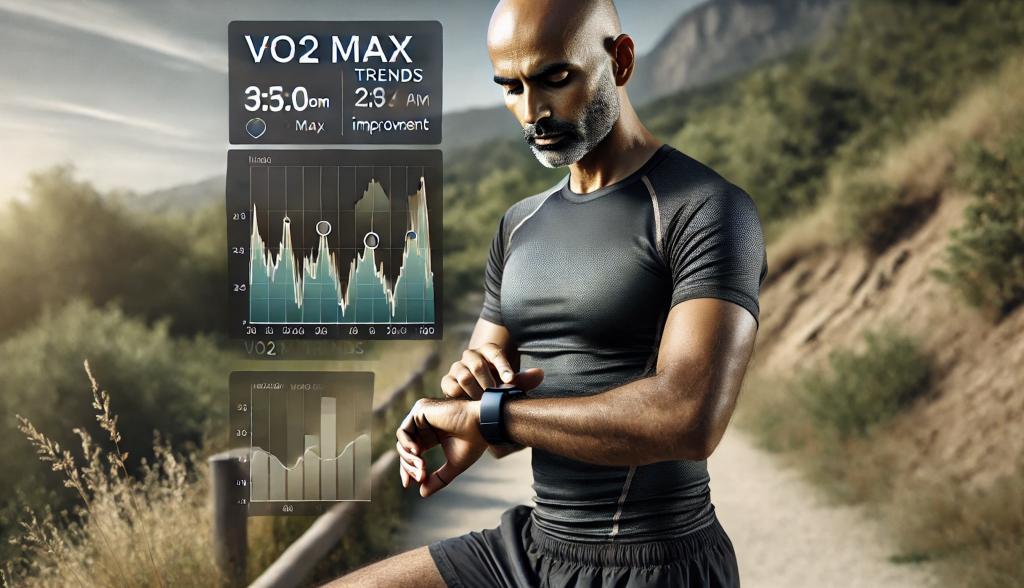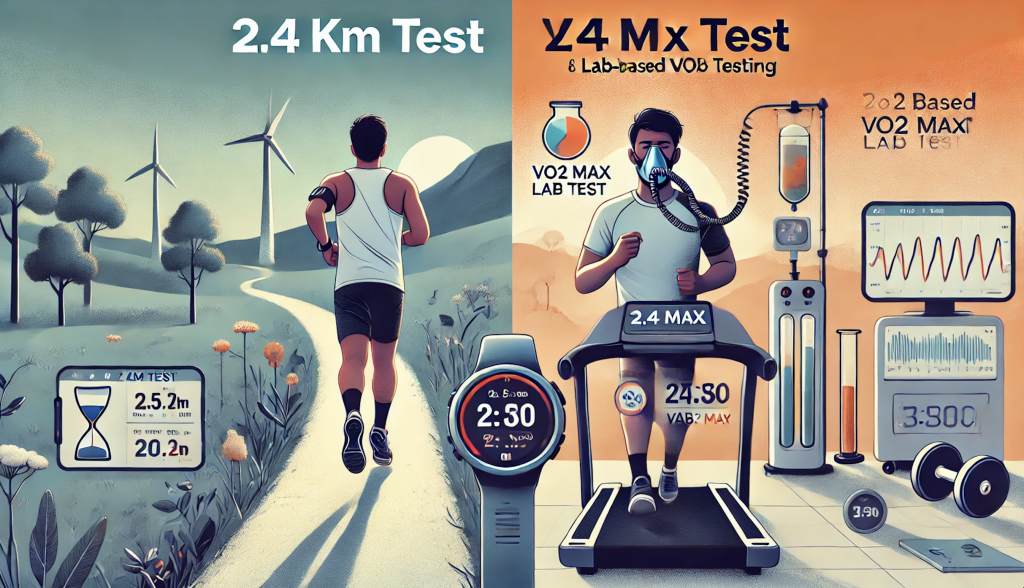
Ah, VO₂ Max. It’s that one term that makes you feel like a scientist when you say it out loud, especially in your running WhatsApp group. For the uninitiated, VO₂ Max is the maximum amount of oxygen your body can use during intense exercise. Sounds serious, right? It is! But don’t worry, this isn’t a college lecture. Let’s talk about what VO₂ Max really means, bust some myths, and share a few relatable experiences along the way.
Myths About VO₂ Max
1. Higher VO₂ Max = Guaranteed Podium Finish
Once upon a time, I thought a high VO₂ Max would make me a marathon king. After a lab test, my VO₂ Max was decent—cue happy dance. But come race day, I got smoked by a 60-year-old in Kelanji shoes that had already done 800K. Turns out, VO₂ Max is just one part of the game. Running economy, mental toughness, and how much poha you’ve had for breakfast matter just as much.
2. My Watch Knows Me Better Than I Know Myself
If you’ve ever trusted your Garmin or COROS to estimate your VO₂ Max, you know the drill. One day it says, “Excellent fitness,” and the next, “Needs improvement.” Like, bro, pick a side! Wearables use algorithms based on heart rate and pace, so they’re useful for trends, not for bragging rights in your running group.
3. VO₂ Max Is the Fitness Bhagavad Gita
I once focused so much on improving my VO₂ Max that I forgot to stretch. Spoiler: I ended up with tight hamstrings and zero PRs. Fitness isn’t just about VO₂ Max—it’s a thali with strength, flexibility, nutrition, and recovery as the other essential dishes.
What Worked for Me

1. Watch the Trends, Not the Numbers
Your VO₂ Max isn’t your CBSE board exam score. Don’t get stuck on the exact value. Instead, focus on how it changes over time. After consistent training (and cutting back on biryani), I saw gradual improvement. Small wins, my friend.
2. Mix and Match Metrics
VO₂ Max is great, but let’s not forget lactate threshold, heart rate variability, and how long you can last at your neighborhood chai shop post-run. A balanced approach is key.
3. Take Your Watch With a Pinch of Masala
Remember, your smartwatch isn’t a lab. It’s more like that overenthusiastic cousin who gives career advice—it means well but isn’t always accurate. Trust it for trends, not gospel truths.
4. Lab Tests: Worth It?
Yes, I did the lab test once. Imagine running on a treadmill with a mask that makes you look like a Bollywood villain. The numbers were precise, but the test was pricey, and I left feeling like I needed a PhD to understand it. If you’re curious (and rich), give it a shot.
5. Train Like a Bollywood Hero
Instead of obsessing over VO₂ Max, focus on a complete training routine. Strength, flexibility, mental toughness, and, yes, the occasional post-run jalebi are all part of the script.
4. Consider Periodic Lab Testing
If feasible, undergo lab-based VO₂ Max testing to obtain precise measurements. This can help validate the estimates from your wearable devices and provide a clearer picture of your aerobic capacity.
5. Focus on Comprehensive Training
Develop a well-rounded training program that addresses all aspects of fitness, including strength, flexibility, and mental conditioning, alongside aerobic training.
The Great Indian VO₂ Max Showdown: 2.4 KM Test vs. Lab Testing

For runners without access to lab facilities, the 2.4 km (1.5-mile) test offers a practical alternative to estimate VO₂ Max. Here’s how they compare:
2.4 KM Test (1.5-Mile Test)
- Procedure: Run 2.4 km as fast as possible on a flat surface and record the time taken.
- Estimation: Use the recorded time in a specific formula to estimate VO₂ Max.
- Accuracy: While convenient, this method provides an estimate that can be influenced by factors like weather conditions, terrain, and individual pacing strategies.
- Here’s how you can do the 24Km VO2 Max test.
Lab-Based VO₂ Max Test
- Procedure: Conducted in a controlled environment, typically involving a treadmill or cycle ergometer, where oxygen consumption is directly measured through respiratory analysis.
- Accuracy: Offers precise and reliable VO₂ Max measurements, unaffected by external variables.
- Considerations: Requires specialized equipment and trained personnel, making it less accessible for the average recreational runner.
Key Differences
-
If lab tests sound too high-tech (or expensive), try the good old 2.4 km test. Here’s how they compare:
-
2.4 KM Test:
- What You Do: Run 2.4 km as fast as possible, then use a formula to estimate VO₂ Max.
- Accuracy: Decent, but your time might depend on whether it’s a hot Chennai afternoon or a cool Bangalore morning.
- Vibe: Jugaad at its finest.
-
Lab Test:
- What You Do: Run on a treadmill, wear a space-age mask, and let a professional measure your oxygen intake.
- Accuracy: Top-notch. But good luck explaining to your spouse why you spent ₹10,000 to run on a treadmill.
- Vibe: “Beta, kuch zyada ho raha hai.”
Bottom Line: The 2.4 km test is perfect for regular tracking, while lab tests are for when you’re feeling fancy (or just want an Instagram post titled “Science + Sweat”).
-
Learn more about the 2.4 KM Test
What I Learned (Besides the Obvious)
VO₂ Max is useful, but it’s not your fitness destiny. After years of chasing numbers, I’ve realized it’s better to focus on consistent training and enjoying the process. Whether it’s a high-tech lab test or a neighborhood 2.4 km run, the goal is to use VO₂ Max as a tool—not an obsession.
So, the next time someone asks about your VO₂ Max, smile, nod, and then challenge them to a sprint after a plate of pani puri. Trust me, that’s the real test of fitness.
References:
- VO₂ Max Overview – Verywell Fit
- VO₂ Max Testing – Exercise Physiology Core Laboratory
- COROS EvoLab Insights
Super Bhaskar, very nicely put. VO2 max though a very important metric for endurance and even longevity, has become a fad amongst runners without many understanding the interpretation of the value.
Great insight into VO2 Max Bhaskar and the usefulness of this indicator including the methods of testing as well as its pros and cons! Agree that a well rounded holistic approach is the crux to running performance rather than get fixated on metrics alone! Thanks for this article
Your blog on VO2 Max is incredibly informative, and I love how you presented it with your characteristic humor! Now, I’m curious – what’s the formula for calculating VO2 Max in the 2.4K test? Please share, I’m interested in learning more!
Thank You! Sunil, Dr. Priya and Narayanan Anna. Here’s the formula for calculating VO2 from the 2.4K run. https://bhaskarthakur.com/2-4-km-vo%E2%82%82-max-test-a-runners-guide-to-dil-se-fitness/
Great insights . It’s like young boy fascination with new gadgets and things that mean nothing or something or are beyond understanding:):)